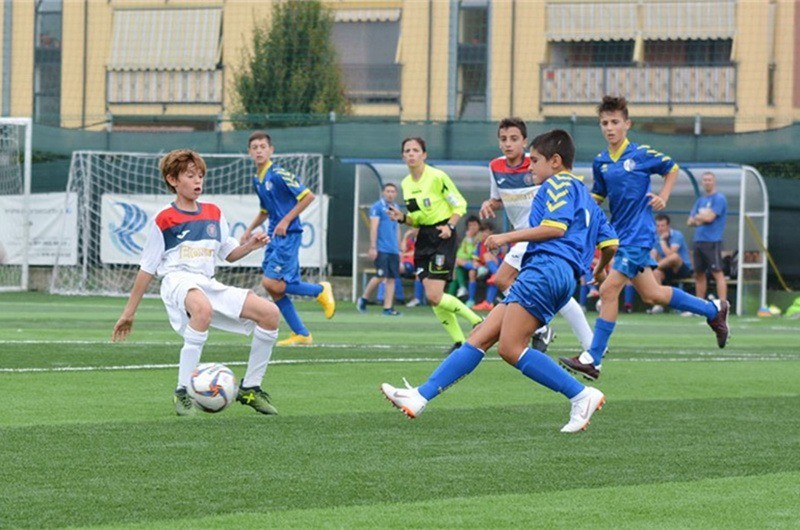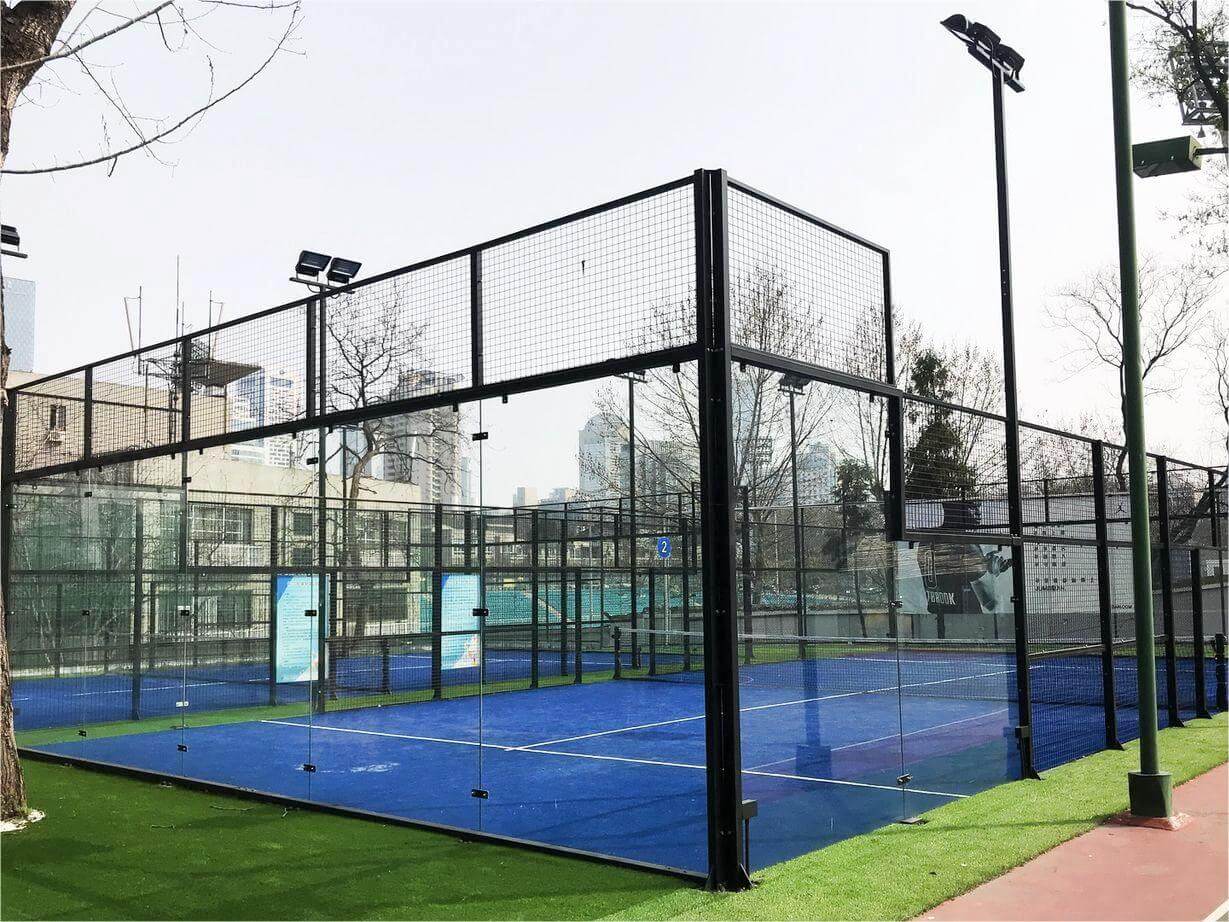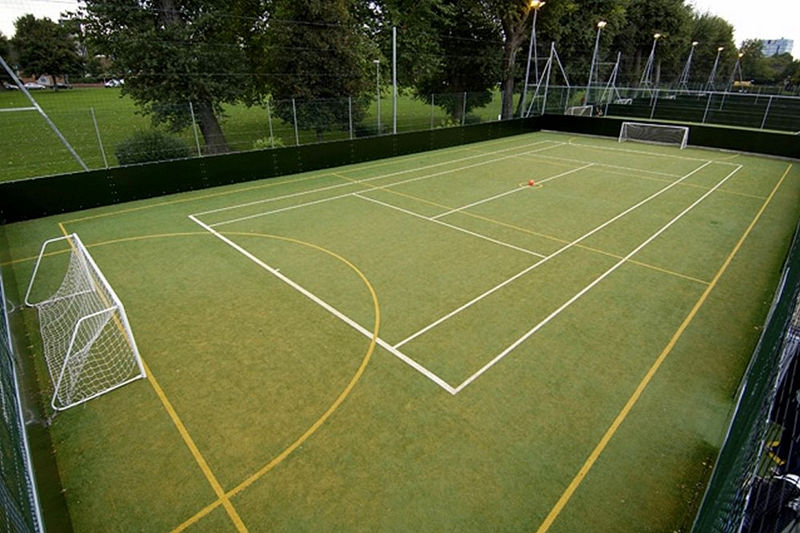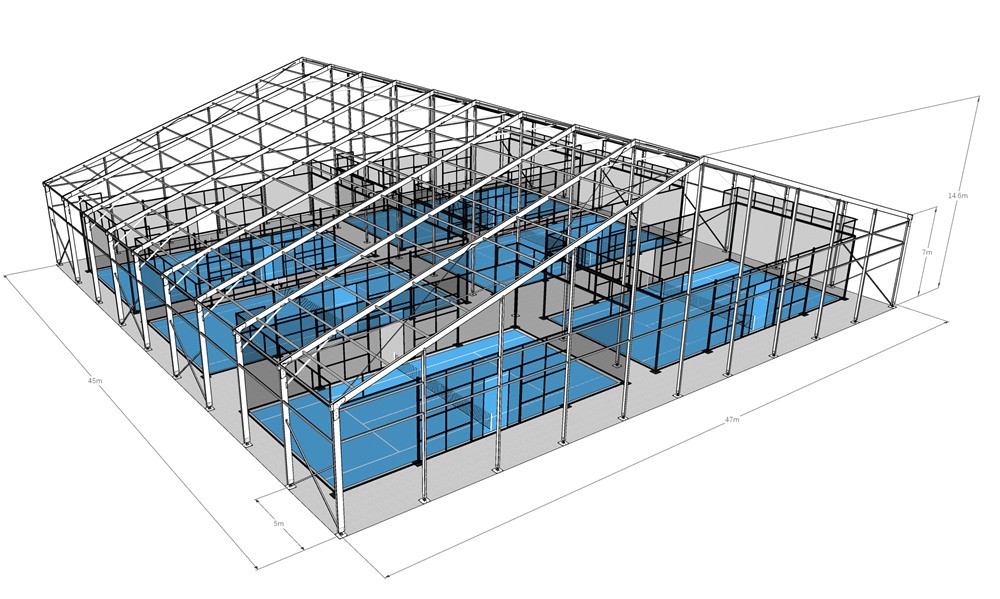Stai pianificando il progetto del tuo campo da padel? Una delle decisioni più cruciali che dovrai affrontare è scegliere tra campi da padel indoor e outdoor. Questa guida completa esplora le principali differenze, i costi e i vantaggi per aiutarti a fare la scelta giusta per la tua struttura, il tuo club o la tua comunità.
Sommario
- Cosa differenzia i campi da padel indoor e outdoor?
- 🏢 Campi da padel indoor: caratteristiche e specifiche
- 🌞 Campi da padel all'aperto: design e vantaggi
- 📐 Specifiche tecniche: cosa devi sapere
- 🌍 Considerazioni sul clima: fare la scelta giusta
- 💰 Analisi degli investimenti: costi e rendimenti
- 🔧 Considerazioni su manutenzione e durata
- 🏆 Strategia aziendale e operativa
- Prendere una decisione: domande chiave da considerare
- 🛠️ Perché scegliere Arturf per il tuo progetto di campo da padel
- Conclusione: il tuo percorso verso il successo nel padel
Cosa differenzia i campi da padel indoor e outdoor?
La scelta tra campi da padel indoor e outdoor influisce su tutto, dai costi di costruzione all'esperienza di gioco. Comprendere queste differenze è essenziale per prendere una decisione di investimento consapevole, in linea con la propria posizione geografica, il clima e gli obiettivi aziendali.
🏢 Campi da padel indoor: caratteristiche e specifiche
Requisiti strutturali
I campi da padel indoor sono costruiti all'interno di edifici chiusi e richiedono specifiche considerazioni architettoniche:
- Altezza minima del soffitto: 6 metri di spazio libero sopra l'intera superficie del campo, anche se per un gioco avanzato si consigliano 8 metri
- Sistemi di climatizzazione: HVAC per il controllo della temperatura e dell'umidità durante tutto l'anno
- Capacità di integrazione: Spesso parte di strutture polisportive o centri fitness commerciali
- Gestione del suono: Trattamenti acustici per minimizzare la trasmissione del rumore
Vantaggi principali
- Indipendenza meteorologica: I campi al coperto garantiscono condizioni di gioco costanti indipendentemente dalle condizioni meteorologiche esterne, assicurando il massimo utilizzo della struttura e la massima generazione di profitti.
- Ambiente controllato: Il gameplay avanzato è migliorato grazie alle altezze appropriate dei soffitti, eliminando variabili come vento, riverbero del sole e sbalzi di temperatura.
- Esperienza Premium: Sistemi di illuminazione professionali e di climatizzazione creano un ambiente ottimale per tornei, sessioni di allenamento e partite competitive.
- Orari di apertura prolungati: I campi al coperto possono essere utilizzati dalla mattina presto fino a tarda sera senza interruzioni dovute alle condizioni meteorologiche.
🌞 Campi da padel all'aperto: design e vantaggi
Caratteristiche costruttive
I campi da padel all'aperto offrono flessibilità nella progettazione e nel posizionamento:
- All'aperto o parzialmente coperto: Le opzioni spaziano dai campi completamente esposti a quelli con copertura a baldacchino o solo tetto
- Integrazione naturale: Si adatta perfettamente agli spazi ricreativi di resort, hotel o comunità
- Drenaggio migliorato: I sistemi critici di gestione dell'acqua prevengono l'accumulo di acqua superficiale
- Materiali resistenti ai raggi UV: Componenti specializzati progettati per resistere all'esposizione prolungata al sole
Vantaggi unici
- Ambiente di gioco naturale: Molti giocatori preferiscono l'autentica esperienza all'aria aperta, con luce naturale e circolazione dell'aria fresca.
- Installazione conveniente: Costi di costruzione iniziali inferiori grazie ai ridotti requisiti infrastrutturali.
- Integrazione scenica: Può essere progettato per integrare i paesaggi, offrendo viste e ambienti naturali attraenti.
- Espansione flessibile: È più facile aggiungere altri campi o modificare la disposizione degli stessi in contesti esterni.
📐 Specifiche tecniche: cosa devi sapere
Dimensioni ufficiali del campo da padel
Tutti i campi da padel, sia al coperto che all'aperto, devono rispettare gli standard della Federazione Internazionale Padel (FIP):
- Dimensioni del campo: 20 metri di lunghezza per 10 metri di larghezza, misurati dalle pareti interne
- Specifiche nette: 0,88 metri di altezza al centro, che sale a 0,92 metri ai pali
- Altezze delle pareti: Altezza totale 4 metri con 3 metri inferiori di vetro o materiali solidi, 1 metro superiore di rete metallica
Requisiti per l'erba artificiale
I campi da padel professionali richiedono sistemi di erba sintetica specializzati:
- Altezza del mucchio: Altezza del filato di 12-13 mm per una giocabilità ottimale
- Riempimento di sabbia: Circa 5 kg per metro quadrato di sabbia silicea per la stabilità della superficie e un rimbalzo della palla costante
- Tecnologia della fibra: La sabbia stabilizza il manto erboso, previene la formazione di nodi e migliora la presa per la sicurezza dei giocatori.
Standard di illuminazione
Un'illuminazione adeguata è fondamentale per entrambe le tipologie di campo:
- Requisiti per l'esterno: Minimo 200 lux con fari posizionati ad almeno 6 metri di altezza
- Requisiti interni: Minimo 300 lux per il gioco ricreativo, doppio per le partite professionistiche
- Standard professionali: Distribuzione uniforme dell'illuminazione con un minimo di quattro posizioni dei proiettori
🌍 Considerazioni sul clima: fare la scelta giusta
I campi al coperto eccellono in:
- Climi invernali rigidi: Neve, temperature gelide e ghiaccio rendono impossibile giocare all'aperto
- Regioni con forti precipitazioni: Le precipitazioni costanti limitano la disponibilità dei campi all'aperto
- Zone con temperature estreme: Sia i climi molto caldi che quelli molto freddi beneficiano del controllo climatico
- Ambienti urbani: Le preoccupazioni relative alla qualità dell'aria e al rumore favoriscono le strutture chiuse
I campi da gioco all'aperto prosperano in:
- Climi mediterranei: Condizioni miti e asciutte con precipitazioni limitate
- Regioni desertiche: Bassa umidità e precipitazioni minime (con adeguate strutture d'ombra)
- Zone tropicali: Con drenaggio adeguato e materiali protetti dai raggi UV
- Posizioni dei resort: Dove la ricreazione all'aperto è parte dell'esperienza degli ospiti
💰 Analisi degli investimenti: costi e rendimenti
Costi di costruzione iniziali
| Aspetto | Campi al coperto | Campi da gioco all'aperto |
|---|---|---|
| Struttura | Più elevato a causa dei requisiti dell'edificio e dei sistemi HVAC | Investimento iniziale inferiore, nessuna recinzione necessaria |
| Fondazione | Base in calcestruzzo standard con considerazioni climatiche | Sono necessari sistemi di drenaggio migliorati |
| Illuminazione | Sistemi LED complessi con distribuzione uniforme | Installazioni di proiettori più semplici |
| materiale | Specifiche standard, ambiente protetto | Componenti stabilizzati ai raggi UV e resistenti alle intemperie |
Spese operative
Campi al coperto:
- Costi di utenza più elevati per il controllo del clima e dell'illuminazione
- Minore manutenzione grazie all'ambiente protetto
- Entrate costanti generazione durante tutto l'anno
Campi da gioco all'aperto:
- Spese di utenza minime
- Maggiore manutenzione e frequenza di sostituzione dei componenti
- Dipendente dalle condizioni meteorologiche fluttuazioni dei ricavi
🔧 Considerazioni su manutenzione e durata
Manutenzione del campo interno
vantaggi:
- Protetto dal degrado UV e dai danni atmosferici
- Maggiore durata del manto erboso con adeguati sistemi di riempimento di sabbia
- Frequenza di pulizia ridotta a causa del minimo accumulo di detriti
- Manutenzione prevedibile orari
Requisiti:
- Manutenzione del sistema HVAC e sostituzione del filtro
- Qualità dell'aria interna gestione
- Manutenzione dell'impianto di illuminazione e ottimizzazione dell'efficienza energetica
Manutenzione del campo all'aperto
Sfide:
- Ispezione regolare di rivestimenti e materiali resistenti ai raggi UV
- Sistema di drenaggio pulizia e manutenzione
- Riparazioni dovute alle intemperie e sostituzione dei componenti
- Preparazione stagionale e protocolli di protezione
Buone pratiche:
- Professionale trimestrale ispezioni
- Riparazione immediata dei danni causati dalle intemperie
- Trattamenti preventivi per la protezione dai raggi UV e dall'umidità
- Conservazione adeguata di apparecchiature rimovibili
🏆 Strategia aziendale e operativa
Campi da gioco al coperto: applicazioni ideali
- Club di padel commerciali: Massimizzazione dei ricavi attraverso una disponibilità costante
- Centri fitness: Integrazione con abbonamenti e servizi di palestra esistenti
- Strutture aziendali: Programmi di benessere per i dipendenti e intrattenimento per i clienti
- Istituzioni educative: Programmi di educazione fisica e sportiva durante tutto l'anno
- Sedi del torneo: Ospitare competizioni professionistiche e amatoriali
Campi da gioco all'aperto: scenari perfetti
- Hotel e resort: Programmazione di attività e svago per gli ospiti
- Centri ricreativi pubblici: Sport comunitari e accesso conveniente
- Sviluppi residenziali: Miglioramento dei servizi per il valore degli immobili
- Società sportive: Completamento delle strutture esterne esistenti
- Strutture stagionali: Campi estivi e destinazioni per le vacanze
Soluzioni ibride: il meglio di entrambi i mondi
Molte strutture di padel di successo combinano campi al coperto e all'aperto per massimizzare la flessibilità e l'attrattiva:
- Opzioni di backup meteo per gli amanti dell'aria aperta
- Diversi livelli di prezzo per diversi segmenti di clientela
- Aumento della capacità per tornei ed eventi
- Maggiore appeal di marketing e differenziazione delle strutture
Prendere una decisione: domande chiave da considerare
Prima di finalizzare il tuo investimento in un campo da padel, valuta questi fattori critici:
Analisi del clima e della posizione
- Quali sono le precipitazioni medie, le escursioni termiche e le condizioni meteorologiche stagionali nella tua regione?
- Quanti giorni di gioco all'anno offrirebbe un campo da gioco all'aperto?
- Esistono normative o restrizioni locali per gli impianti sportivi all'aperto?
Valutazione del modello di business
- La tua struttura sarà operativa tutto l'anno o solo stagionalmente?
- Qual è il tuo target di clientela: giocatori amatoriali, atleti agonisti o turisti?
- Quanto è importante per il tuo piano aziendale generare entrate costanti?
Considerazioni su budget e tempi
- Qual è il capitale disponibile per la costruzione iniziale?
- Siete in grado di sostenere costi operativi correnti più elevati per le strutture indoor?
- Quali sono le tempistiche previste per il completamento del progetto e la generazione di ricavi?
Piani di espansione futuri
- Aggiungerete altri campi in futuro?
- Ci sono limiti di spazio che favoriscono un'opzione rispetto a un'altra?
- In che modo questa decisione si concilia con i vostri obiettivi di sviluppo della struttura a lungo termine?
🛠️ Perché scegliere Arturf per il tuo progetto di campo da padel
In qualità di azienda leader nella produzione di campi in erba sintetica e campi da padel con sede in Cina, Arturf fornisce prodotti di alta qualità per campi da padel in tutto il mondo. La nostra esperienza include:
Prodotti Premium Court:
- Sistemi di erba sintetica di livello professionale con altezza ottimale del pelo di 12-13 mm e specifiche adeguate di riempimento di sabbia
- Pannelli in vetro e sistemi di recinzione soddisfare gli standard di sicurezza internazionali
- Componenti completi del tribunale progettato per applicazioni sia interne che esterne
- Spedizione in tutto il mondo con partner logistici affidabili
Produzione di qualità:
- Prodotti conformi FIP soddisfare le specifiche ufficiali del tribunale
- Materiali resistenti ai raggi UV per la durevolezza all'aperto
- Componenti testati per il clima adatto a diverse condizioni meteorologiche
- Produzione certificata ISO garantire una qualità costante
Soluzioni di fornitura globale:
- Spedizioni internazionali a progetti in tutto il mondo
- Specifiche complete del prodotto e documentazione tecnica
- Partnership con appaltatori locali e installatori a livello globale
- Supporto tecnico per la selezione e le specifiche del prodotto
Conclusione: il tuo percorso verso il successo nel padel
La scelta tra campi da padel indoor e outdoor dipende dalla posizione geografica, dal clima, dal budget e dagli obiettivi aziendali. I campi indoor offrono continuità e un potenziale di guadagno costante durante tutto l'anno, ma richiedono un investimento iniziale maggiore. I campi outdoor offrono un ingresso conveniente nella proprietà di un impianto da padel con un fascino naturale, ma possono presentare limitazioni dovute alle condizioni meteorologiche.
Il successo in entrambe le opzioni richiede una costruzione di qualità, materiali adeguati e un'installazione professionale in loco. Collaborando con produttori esperti come Arturf, puoi garantire che i tuoi campi da padel soddisfino gli standard internazionali e offrano un valore a lungo termine.
Pronti a procurarvi prodotti di qualità per campi da padel? Contatta il nostro team di esperti per informazioni su specifiche di prodotto, prezzi e spedizione personalizzate in base alla posizione e ai requisiti del tuo progetto.
Questa guida fornisce informazioni generali per la progettazione di campi da padel. Per requisiti tecnici specifici e normative edilizie locali, consultare ingegneri professionisti e le autorità locali della propria zona.




